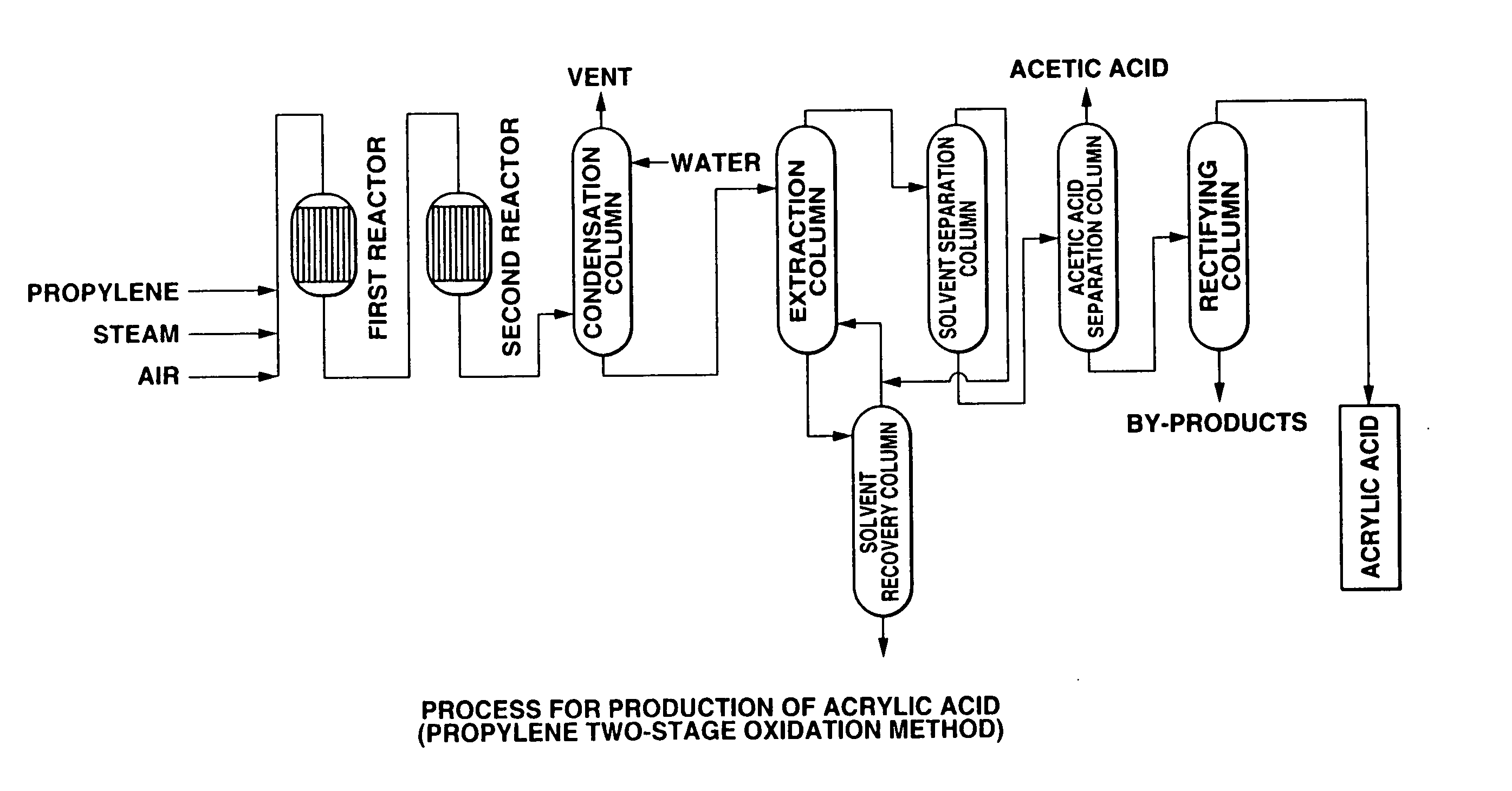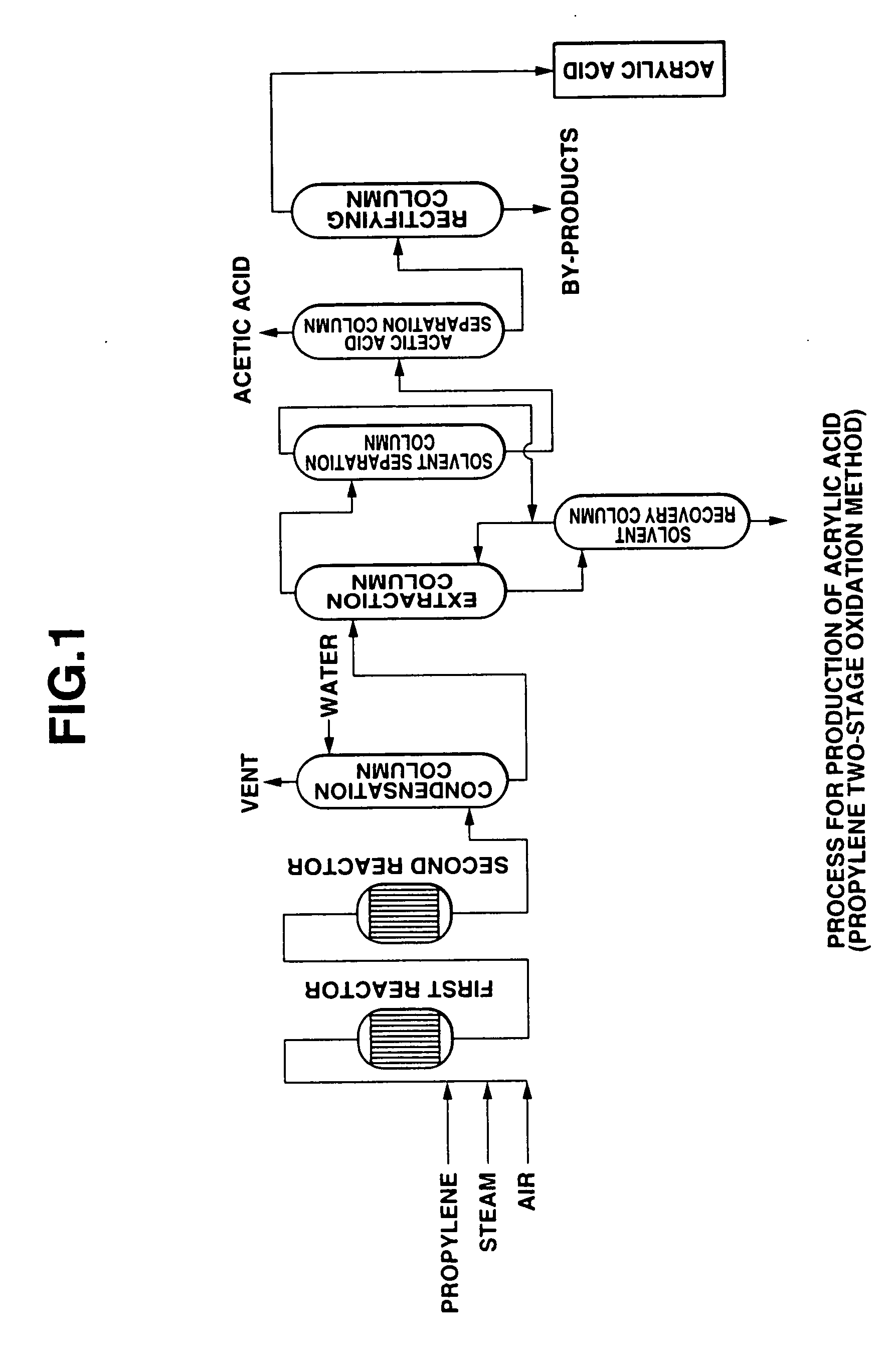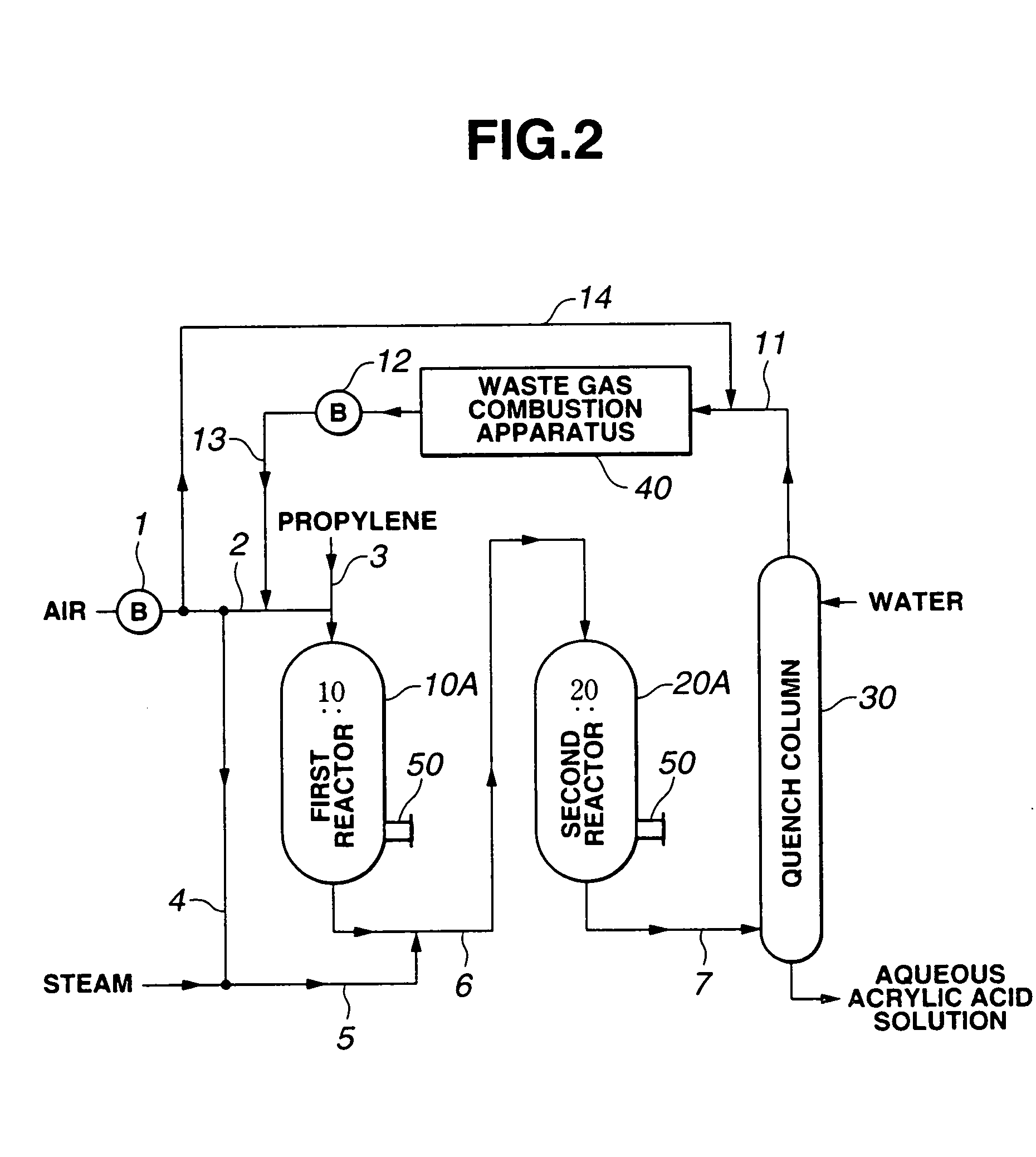Oxidation reactor, process for producing (meth) acrylic acids, and method for analyzing easily-polymerizable compounds
a technology of acrylic acid and oxidation reactor, which is applied in the field of oxidation, can solve the problems of unstable oxidation reaction of the gas, unusable retention of the reaction gas, and become extremely difficult to open the nozzle and manhole, and achieve the effect of preventing automatic oxidation of acrolein
- Summary
- Abstract
- Description
- Claims
- Application Information
AI Technical Summary
Benefits of technology
Problems solved by technology
Method used
Image
Examples
example 1
[0067] According to the flow chart as shown in FIG. 2, propylene was subjected to oxidation reaction using as first reactor 10 a multipipe heat-exchange type oxidation reactor having an inner diameter of 4 m which was provided on a shell side thereof with a baffle plate for changing the flow path of a heating medium. The reactor was provided with manhole nozzle 50 (size: 24B) fitted with partition plate 52 as shown in FIG. 3, and an inside of manhole nozzle 50 was purged with a nitrogen gas supplied at a feed rate of 5 Nm3 / hr.
[0068] It was confirmed that the reaction product gas obtained from the reactor was a mixed gas composed mainly of 67% by weight of nitrogen and 13% by weight of acrolein.
[0069] The reaction was continued for 3 months. As a result, it was confirmed that acrolein obtained at an outlet of the reactor was free from automatic oxidation and, therefore, the operation of the reactor was stably continued.
example 2
[0070] The same procedure as defined in Example 1 was conducted except that the nitrogen gas as a purge gas was replaced with the waste gas discharged from the waste gas combustion apparatus through line 13 as shown in FIG. 2, thereby conducting the oxidation reaction of propylene.
[0071] The reaction was continued for 3 months. As a result, it was confirmed that acrolein obtained at an outlet of the reactor was free from automatic oxidation and, therefore, the operation of the reactor was stably continued.
example 3
[0074] According to the flow chart as shown in FIG. 2, propylene was subjected to oxidation reaction using as first reactor 10 a multipipe heat-exchange type oxidation reactor having an inner diameter of 4 m which was provided on a shell side thereof with a baffle plate for changing the flow path of a heating medium. The reactor was provided with nozzles 42 (size: 3 / 4B) for mounting a thermometer and a pressure gauge as well as manhole nozzle 50 (size: 24B) as shown in FIG. 5, and a nitrogen gas was fed to the respective nozzles 42 at a feed rate of 0.6 Nm3 / hr, and to manhole nozzle 50 at a feed rate of 70 Nm3 / hr.
[0075] It was confirmed that the reaction product gas obtained from the reactor was a mixed gas composed mainly of 67% by weight of nitrogen and 13% by weight of acrolein.
[0076] The reaction was continued for 3 months. As a result, it was confirmed that acrolein obtained at an outlet of the reactor was free from automatic oxidation and, therefore, the operation of the rea...
PUM
| Property | Measurement | Unit |
|---|---|---|
| Temperature | aaaaa | aaaaa |
Abstract
Description
Claims
Application Information
 Login to View More
Login to View More - R&D
- Intellectual Property
- Life Sciences
- Materials
- Tech Scout
- Unparalleled Data Quality
- Higher Quality Content
- 60% Fewer Hallucinations
Browse by: Latest US Patents, China's latest patents, Technical Efficacy Thesaurus, Application Domain, Technology Topic, Popular Technical Reports.
© 2025 PatSnap. All rights reserved.Legal|Privacy policy|Modern Slavery Act Transparency Statement|Sitemap|About US| Contact US: help@patsnap.com



